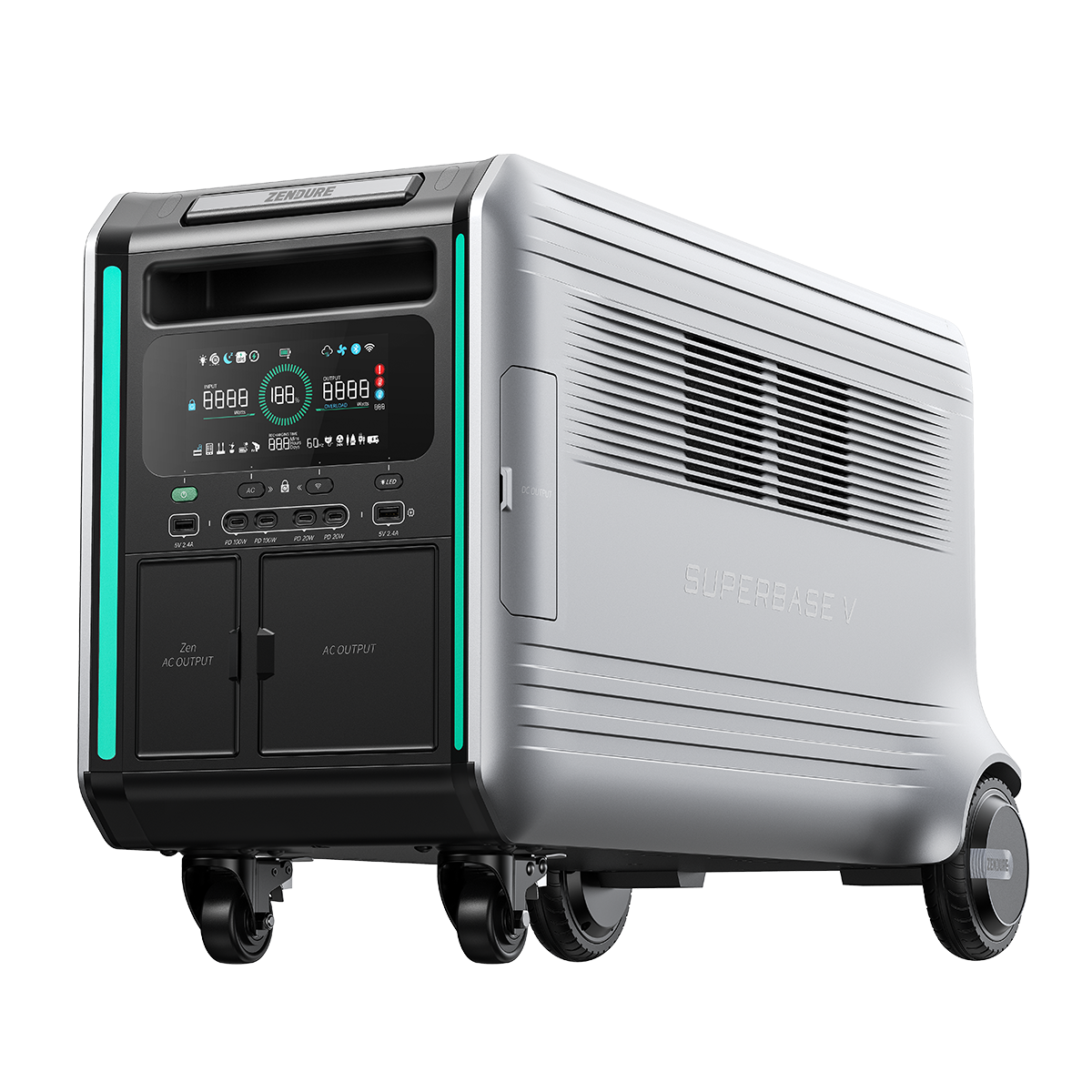https://zendure.com/pages/superbasev
I saw the ad on Electrek and I checked it out. This is a portable 120/240-volt 3800-watt portable modular power station on powered wheels that can be charged from public EV chargers or up to 3000-watt solar arrays or just plugged into either 120 or 240v for a combined 6.6kW charging rate, as little as a 1 hour recharge.


 zendure.com
zendure.com
Stackable battery modules can quintuple the power storage to 32 kWhs, and two systems can be merged into one with twice the kWs and twice the kWh, able to run your entire house from battery. Zendure offers a device called the Home Panel that acts as an automatic transfer switch to cover up to 10 circuits in case of a power outage. All batteries, the inverters, 10 circuits and two 240v outlets for EV charging on the Home Panel can be controlled by the Phone App from anywhere via WiFi or locally via Bluetooth.

There's a Kickstarter campaign currently underway and ending Sat, November 19 2022 8:45 AM PST with discounts as much as 46% on the retail pricing.
I initially thought I would get just the cheapest setup as I worry about failed Kickstarter projects, but then I got my $3600 Apple bag-check lawsuit proceeds and I ended up ordering a second Superbase (only $700 more than buying just an expansion battery), and if I have two systems I have to get the Home Panel. I did design and install my own micro-inverter based solar system, and I have been trying to add a battery to it for almost the 3 years I have had it installed.
If ONLY Tesla would have sold me/installed a PowerWall I'da been happy, but this 10kWh whole house system is $6650 delivered, hopefully this November. And I won't need 3 other guys to help me carry it.
Check out the links, as this product is great for all sorts of other situations too:
I saw the ad on Electrek and I checked it out. This is a portable 120/240-volt 3800-watt portable modular power station on powered wheels that can be charged from public EV chargers or up to 3000-watt solar arrays or just plugged into either 120 or 240v for a combined 6.6kW charging rate, as little as a 1 hour recharge.


Zendure SuperBase V Power Station - Zendure
SuperBase V is the first home energy storage system with semi-solid state batteries for greater storage capacity and superior safety. With dual 120V/240V output, input up to 6,600W, the industry's fastest solar charging performance, seamless UPS feature, and customizable systems with up to 64kWh...
Stackable battery modules can quintuple the power storage to 32 kWhs, and two systems can be merged into one with twice the kWs and twice the kWh, able to run your entire house from battery. Zendure offers a device called the Home Panel that acts as an automatic transfer switch to cover up to 10 circuits in case of a power outage. All batteries, the inverters, 10 circuits and two 240v outlets for EV charging on the Home Panel can be controlled by the Phone App from anywhere via WiFi or locally via Bluetooth.

There's a Kickstarter campaign currently underway and ending Sat, November 19 2022 8:45 AM PST with discounts as much as 46% on the retail pricing.
I initially thought I would get just the cheapest setup as I worry about failed Kickstarter projects, but then I got my $3600 Apple bag-check lawsuit proceeds and I ended up ordering a second Superbase (only $700 more than buying just an expansion battery), and if I have two systems I have to get the Home Panel. I did design and install my own micro-inverter based solar system, and I have been trying to add a battery to it for almost the 3 years I have had it installed.
If ONLY Tesla would have sold me/installed a PowerWall I'da been happy, but this 10kWh whole house system is $6650 delivered, hopefully this November. And I won't need 3 other guys to help me carry it.
Check out the links, as this product is great for all sorts of other situations too:
- The modular batteries can be used directly in an RV as the house battery with solar charging, or batteries if you want more storage, up to four can be stacked and that would be as much power as ANY modern lithium based RV.
- The main unit can be charged at a Public EV charger and then used later to charge your EV to get a bit of extra range
- The battery tech inside can be LFP and store 4.6kWh in each battery module, but they also support the somewhat heavier Semi-Solid State tech that supports 6.4kWh in the same space, but allowing charging down to -20°F, and having much safer damage characteristics.
Last edited:


